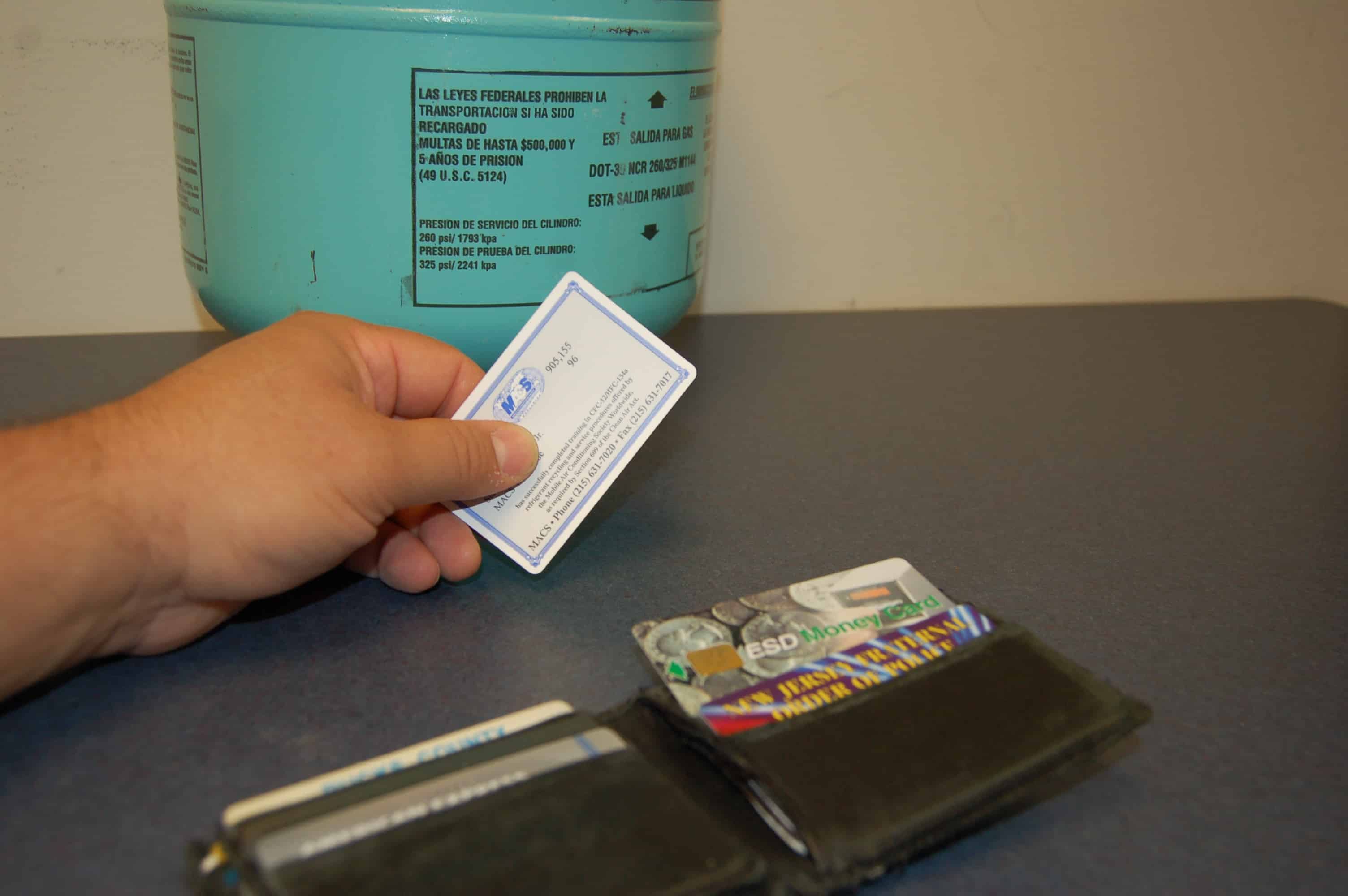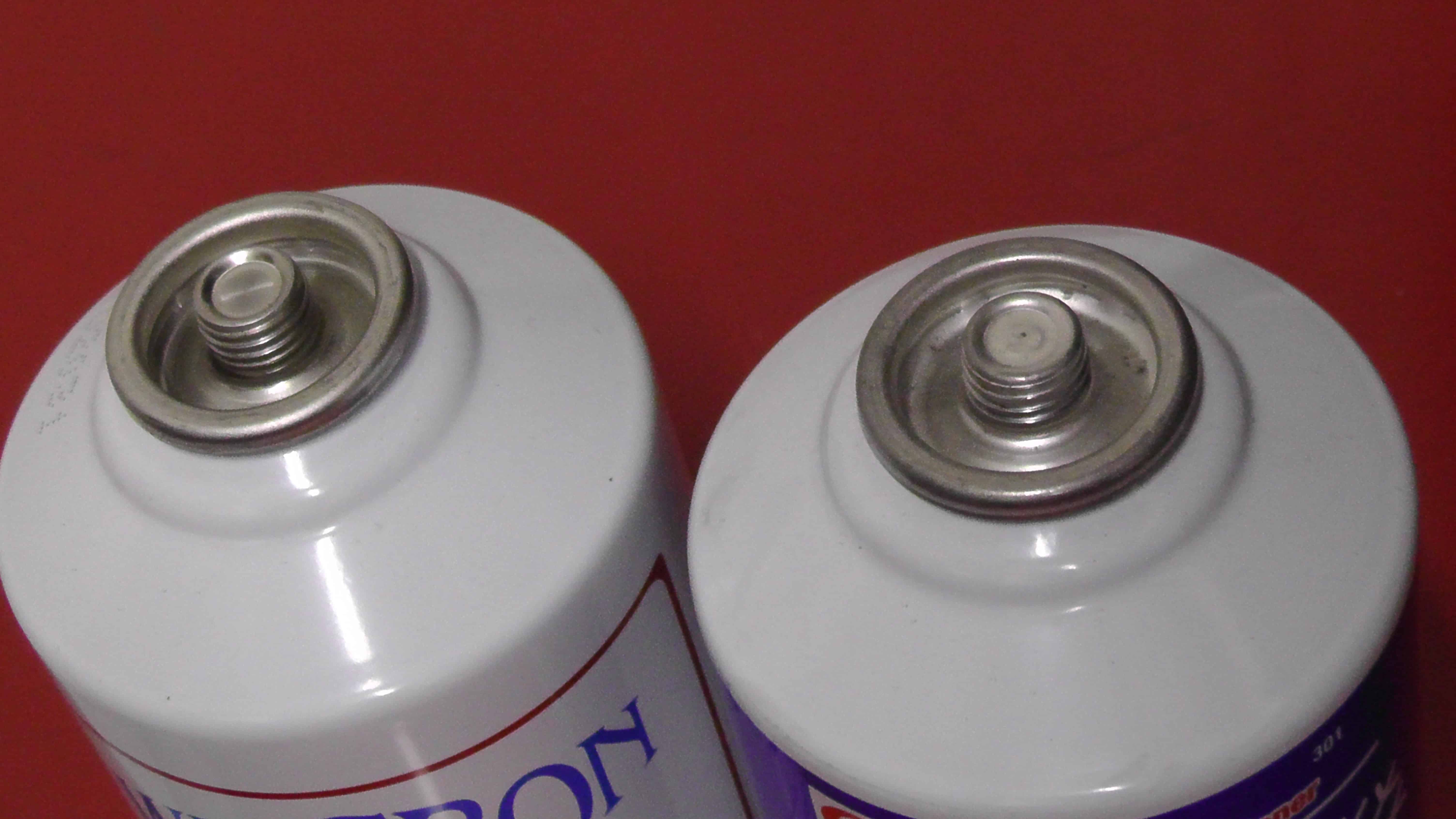New EPA rule restricts the sale of HFC refrigerants
By Steve Schaeber, MACS Technical Editor
On September 26th, US EPA finalized two rules that will reduce the projected growth and emissions of HFCs (hydrofluorocarbons), a class of chemicals that includes the mobile air conditioning refrigerant R-134a, commonly used in many automobiles and light trucks, heavy duty trucks and off-road equipment. MACS first reported about this upcoming rule change earlier in 2016, and as expected it’s now become final.
The rule applicable to mobile A/C affects Section 608 of the Clean Air Act, which extends the ODS (Ozone Depleting Substance) sales restriction to HFCs and other non-exempt substitutes, with the exception of small cans containing two pounds or less of (primarily) HFC-134a for servicing motor vehicle air conditioners. These small cans can continue to be sold without technician certification so long as the small cans have a self-sealing valve to reduce refrigerant leakage. It also applies to other non-ozone depleting substitutes such as R-1234yf, the new HFO that’s quickly becoming the replacement of choice for car and light truck manufacturers around the world due to its lower GWP (global warming potential).
“These two rules demonstrate the United States’ continued leadership in protecting public health and the environment,” said EPA Administrator Gina McCarthy. “We are reducing emissions of HFCs that are harmful to the climate system and showing the world that we can do this responsibly and thoughtfully by working with businesses and environmental groups. I’m especially excited that we have taken these actions ahead of next month’s Montreal Protocol negotiations.”
Most of the EPA rules and regulations that apply to technicians working in the mobile air conditioning industry come from Section 609 of the US Clean Air Act of 1990, but there are other sections of that Act that affect our work in the shop each day. One in particular is Section 608, which although commonly thought to affect only HVAC/R technicians (those who work on commercial, industrial and residential A/C units, refrigerators and freezers), also applies to the mobile A/C community because it contains the bulk of EPAs “refrigerant management program.”

Beginning on January 1, 2018 technicians will need to show their Section 609 Certification card if they want to purchase mobile A/C refrigerants, including R-12, R-134a and R-1234yf.
So what do these changes mean to mobile A/C technicians, shops and shop owners? Probably the biggest is that technicians will need to be certified under Section 609 through a program like MACS if they are going to purchase refrigerant. Prior to this rulemaking, a MACS certification was only required for purchases of CFC refrigerants like R-12, but on January 1, 2018, you’ll also need one if you want to buy R-134a or the new HFO refrigerant, R-1234yf.
The other change that’s coming to mobile A/C is going to affect the consumer side more so than the professional technician, and that’s with those small cans of refrigerant sold by auto parts stores and other big box retailers. As long as those cans contain less than 2 pounds of refrigerant, it will be legal to purchase them without a Section 609 credential, but they’ll still need a self-sealing valve. This is something new to technicians and car owners in most of the US, but not in California. The Golden State has been using self-sealing cans since 2010 when CARB (the California Air Resources Board) first required their use. Based on the NPD Automotive Aftermarket Industry Monitor, 2008, approximately 14 million small cans are sold each year.

With the exception of California, small cans of refrigerant are sold without self-sealing valves in the US. This new EPA rule changes that, requiring the use of self-sealing cans across the country. It doesn’t take effect until January 1, 2018, but we expect to see the new cans in stores by next summer (2017).
More information about these and other EPA rules and regulations can be found on their www.epa.gov website.
Visit the MACS website www.macsw.org where you can learn how to become certified by MACS under Section 609 of the US Clean Air Act. While you’re there, you can download a copy of the MACS study manual.
Keeping in touch with MACS keeps you in touch with the world of mobile A/C! If you’re a mobile A/C technician or shop owner and you’re not yet a MACS member, what are you waiting for? Visit our website www.macsw.org for more information and to join MACS and become a member today!
If you’re a service professional and not a MACS member yet, you should be!
Become a member and receive a monthly technical newsletter with information like what you’ve just read in this blog post visit http://bit.ly/10zvMYg for more information.
You can E-mail us at macsworldwide@macsw.org .
To locate a Mobile Air Conditioning Society member repair shop in your area.
Click here to find out more about your car’s mobile A/C and engine cooling system.
Mobile A/C professionals should plan to attend MACS 2017 Training Event and Trade Show, February 15-18 at the Anaheim Marriott in Anaheim, CA.
Click here to see MACS current public training schedule.
The MACS website is located at www.macsw.org

[…] 8. New EPA rule restricts the sale of HFC refrigerants | Mobile Air … […]